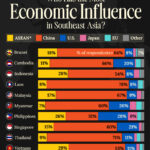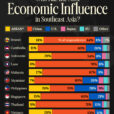
At last year’s Jackson Hole Symposium, Fed Chair Janet Yellen delivered an extended analysis of “Labor Market Dynamics and Monetary Policy”. Her speech essentially reviewed the ongoing debate over the mix of cyclical versus structural factors in employment since the Great Recession.
Here is an updated a series of charts illustrating some structural changes in the workforce that are far more significant than the cyclical impact of the Great Recession.
The Unemployment Rate: Additional Jobs Needed
The closely watched headline unemployment rate is a calculation of the percentage of the Civilian Labor Force, age 16 and older, currently unemployed. Let’s put that into its historical context. The first chart below illustrates this monthly data point since 1990.
The indicator for April ticked down from 5.5% to 5.4%. Today’s Civilian Employed would require 1.6 million additional job holders to match its interim low in 2007, and we would need 2.5 million to match the lowest rate in 2000.

Additional Jobs Needed for the Prime Employment Age Group
Let’s look at the same statistic for the core workforce, ages 25-54. This cohort leaves out the employment volatility of the college years, the lower employment of the retirement years and also the age 55-64 decade when many in the workforce begin transitioning to retirement.
In the latest data this indicator ticked up from 4.5% to 4.6%. Today’s age 25-54 labor force would require the additional employment of 1.2 million age 25-54 to match its interim low in 2006 and 1.7 million to match the lowest rate in 2000.

Labor Force Participation Rate: A More Sobering Measure
A wildcard in the two snapshots above is the volatility of the Civilian Labor Force — most notably the subset of people who move in and out of the workforce for various reasons, not least of which is discouragement during business cycle downturns. The chart below continues to focus on our 25-54 core cohort with a broader measure: The Labor Force Participation Rate (LFPR). The LFPR is calculated as the Civilian Labor Force divided by the Civilian Noninstitutional Population (i.e., not in the military or institutionalized). Because of the extreme volatility of the metric, we’ve included a 12-month moving average.















